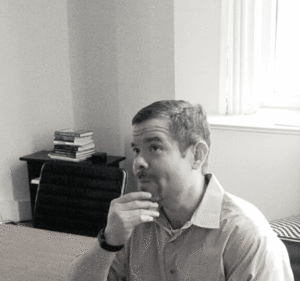7 Habits of Highly Effective Digital Project Managers

Many years ago, Stephen R. Covey wrote the groundbreaking book “The 7 Habits of Highly Effective People: Powerful Lessons in Personal Change” and it quickly gained recognition as a must-read for business professionals. His approach to simplifying the traits and habits for becoming more effective in achieving goals has helped countless people. During my years working for numerous digital agencies and design consultancies, I’ve learned that while effective project managers implement different styles and tactics, they all share a set of skills that critical for ensuring their projects and teams are successful. Like Covey’s habits, these tactics are more philosophical in nature and require self-awareness and true effort to master.
Yes, having skills with tools and methodologies is helpful in being a good project manager. There’s no denying the value of a well structured MS Project schedule or clearly written status report, but what’s more important is the instinct and experience to know when and how to leverage the various tools of the trade—including soft skills that only come from an acute awareness of the habits and behaviors of people on your project.

The concept of putting together a list of habits for effective project managers is not new. A quick Google search will bring back a host of results from very intelligent and qualified people who have done it for their particular project management situations. When I first thought of putting together my list, I wanted to put a slightly different spin on it and focus on what I know best, which is managing the process of producing products in the digital world.
While writing this, I realized that 7 habits weren’t really enough to capture the traits of all the exceptional PMs I’ve had the honor of working with, but to keep true to the format that Mr. Covey created, I’m providing the ones that I feel are most crucial.
1) Encourage deep cross-partner collaboration
One of the keys to successfully launching a digital project is aligning multiple teams together under the context of the overall program. Many times, this includes integrating with other vendors or partners who provide critical services in support of your project’s success.
A good PM needs to be able to understand how each party’s contribution fits into the overall project and identify the pieces that have the greatest likelihood of falling behind schedule or causing risk. Don’t be afraid to request a meeting with these folks to review their own timeline, scope, and progress, and encourage your client to invite them to the status meetings to allow for more open communication between all parties. Take a leadership role in making this collaboration happen and not only will your project benefit, your client will see you as a true partner (not simply a vendor) in the overall success of their initiative.
2) Expose and address issues immediately
I think all project managers at some point in their career are guilty of being overly optimistic that an issue will resolve itself. (I know I made this mistake more than once early on.) Scott Berkun first exposed me to the concept of hope creep in his book “The Art of Project Management,” and it really resonated with me. Basically, hope creep is the concept of not addressing bad news in hopes that the issue will resolve itself. This can take the form of not communicating a key date slipping, sugar-coating a less than ideal project status, or ignoring an underperforming team member.
One consistent trait that all good PMs have is that they are diligent at addressing issues as soon as they are identified. It’s simply illogical to think that a negative factor will somehow magically fix itself. Identify the issue, communicate it, and lead the effort to address it. If you can’t address the issue yourself, clearly communicate it to your client, highlighting the potential impact to the project’s success. They may not be happy at first, but they will appreciate your honesty and efforts toward protecting their interests.
3) Encourage continuous improvement
One of the tenets of the Agile movement is for the team to constantly reflect on how to be more effective. This concept should be embraced by all PMs, regardless of the methodology you’re following. If you see yourself or a team member struggling with an existing process, tool, or approach, fix it!
My former boss (who is one of the smartest people I know) used the phrase “zero tolerance, with a loving heart.” While this was often misconstrued, I fully agree with the concept. If something isn’t working, it’s not only your right to fix it, but your duty. In doing so you should be empathetic to those affected and make all reasonable efforts to ensure that your change is a positive one. Remember that being overly reactive can also be disruptive, so learn to think through identified issues and address them in a logical and well-thought out manner.
4) Tailor your communications to your audience
Mark Twain once wrote in a letter to a friend “I didn’t have time to write a short letter, so I wrote a long one instead.” I often reference this quote because I see PMs who accurately communicate information but don’t effectively communicate it. It is important for a PM to know how to ensure all team members and stakeholders comprehend the information given to them. This usually results in a mixture of verbal and written communication with varying levels of detail. Assume the recipient only has a few minutes to focus on your communication. Some tactics to consider when communicating include:
- Be short and to the point. Don’t make it difficult for people to pull out the important information by burying it within a lot of unnecessary fluff.
- Use bulleted lists when possible. This is a very simple but effective technique. Whenever communicating a series of items or ideas, list them out and comprehension will be better.
- Highlight names and dates. When sending out communications requiring people to take action, leverage your tools to bold or highlight the names of the individuals associated with each action item and the dates that their action item is expected to be completed.
- Follow up in person. Whenever possible, follow up on important written communications in person. Walk over to your team member and verify that the message was understood. If you can’t walk over, give them a quick call or IM to ensure your message was received and understood.
5) Keep your coders coding
Though often attributed to coders, this idea actually applies to every specialist on your project team. A good PM values their team members’ time and does whatever it takes to make sure it’s used efficiently and effectively. You may have a designer who knows Excel pretty well, but trust me, your project will benefit far more if this designer focuses on design instead of wrangling a spreadsheet.
In addition, you should make sure that each team member has all of the information needed to easily complete their tasks. If a designer needs an asset or a coder needs clarity on a defect, take this task upon yourself and let them move on to their next task. Don’t reassign the task until you’re confident that it can be completed by your team member efficiently.
6) Don’t fall behind
Whether tracking decisions or hitting milestones, it’s very difficult to catch up during a complicated project once you fall behind. First, get into the habit of keeping your tasks up to date. Maintain and groom your action log, document decisions, post your meeting notes, update your status reports, review your budget tracking sheet, etc.
Next, make it a weekly routine to take care of your administrative duties. This step will help you carve out more time to focus on what’s really important: managing your project and your team members. As for your project schedule, if you find it slipping, work with your team to come up with a realistic plan for catching up. If they’re part of the planning, they’ll be much more cooperative and accountable when executing.
7) Know your scope, communicate your scope, and protect it
I’ve been building websites for clients since 1996. Since then, I can honestly say that I’ve never participated in a project where scope creep wasn’t a risk. Remember, scope management isn’t only beneficial to you as a “vendor”, but is also extremely important for ensuring your client’s needs are met as well. Each time a requirement changes or a decision is overturned, there’s risk to your timeline, risk to your budget, and potential risk to your team. It’s extremely important that you, your team, and your client all agree with what exactly is in scope and what is not.
During the first couple of days of the project, take time to meet with your client, your team, and any other vendors to review the scope together. If there’s any uncertainty as to what a specific piece of language in your Statement of Work means, it’s important that you identify it early and work with your client to come to an agreement. If you do this early on, you’ll eliminate the risk of not meeting your client’s expectations later on.
During the project there will most likely be situations where someone asks your team to do something that is not part of the official scope. Make sure you have a change control process in place before this occurs. Good PMs are comfortable with explaining to a client why something is out of scope, and come prepared with options for how to best accommodate the request. Nine times out of ten, your client will understand your position and cooperate with the change control process. Finally, know that it is never too late to clarify scope.
As with many lists, this isn’t intended to be exhaustive. That’s OK. Use these items as a foundation for your own list, and work with your PMO to put one together that works best for you, your team, and your clients.



